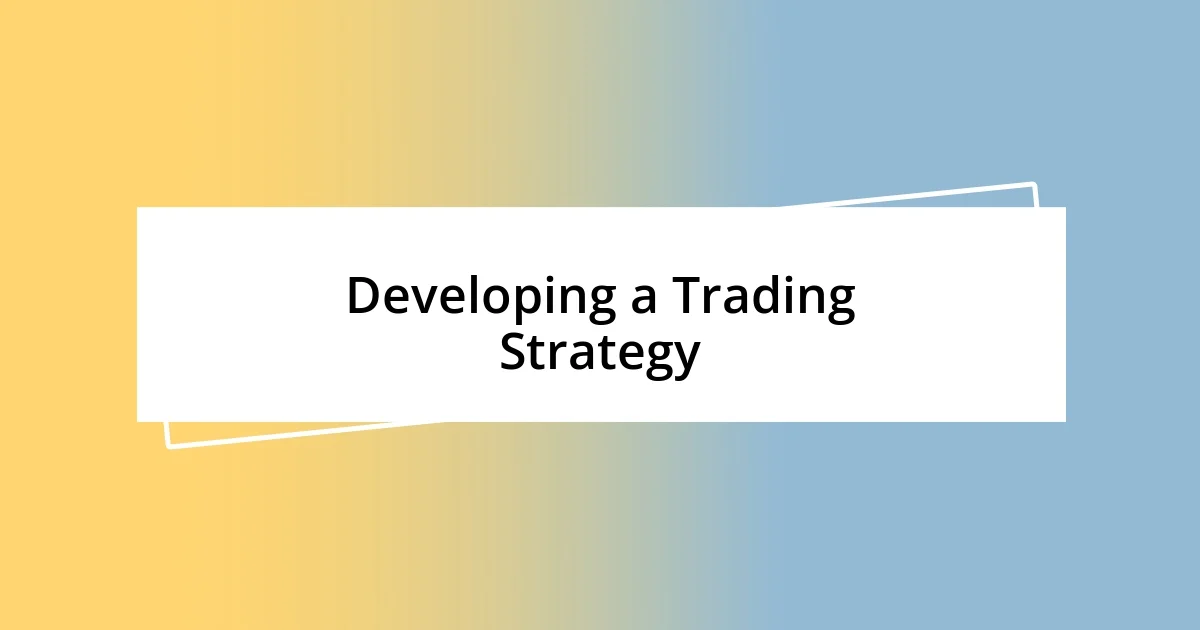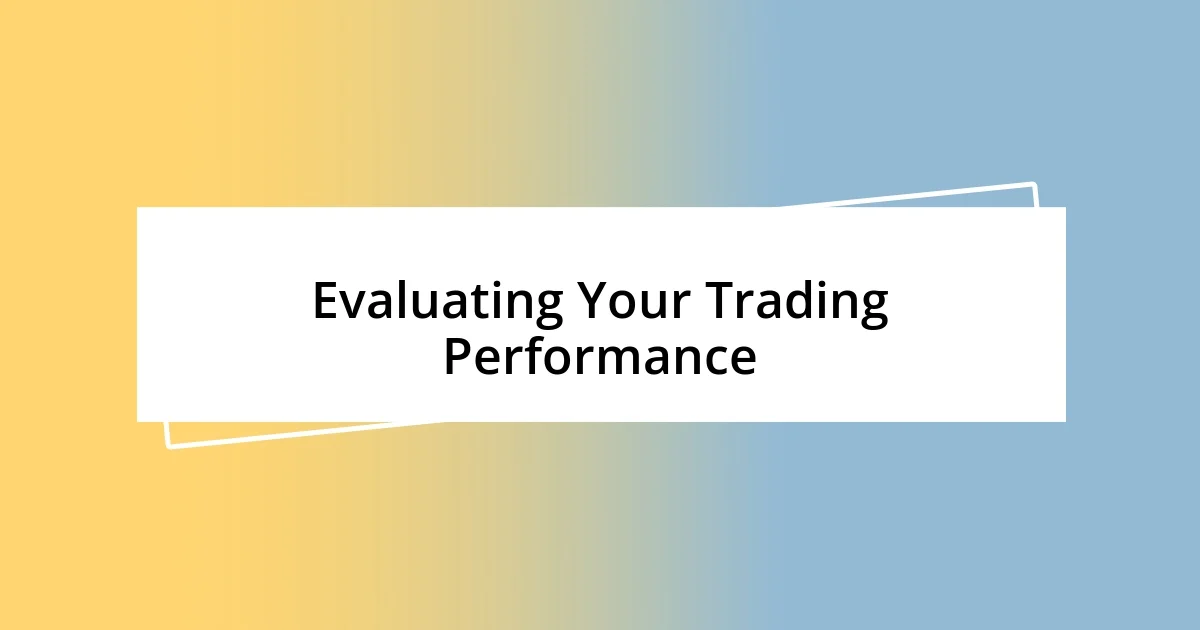Key takeaways:
- Understanding key technical analysis concepts like moving averages, candlestick patterns, and volume analysis enhances trading strategies and empowers traders.
- Utilizing essential tools such as charting software, news aggregators, and backtesting platforms improves market interpretation and decision-making.
- Implementing effective risk management techniques, including maximum loss thresholds, position sizing, and diversification, helps protect capital and stabilize returns.

Understanding Technical Analysis Concepts
Diving into technical analysis for crypto can feel overwhelming at first, but once you grasp the basic concepts, it becomes much more intuitive. I remember the moment I first encountered moving averages—how these statistical calculations could help smooth out price data seemed almost magical. Isn’t it fascinating how just two lines on a chart can unveil trends and potential turning points?
Candlestick patterns are another cornerstone of technical analysis that I’ve grown to appreciate deeply. Each candlestick tells a story—its body and wicks reveal buyers’ and sellers’ emotions during a specific time frame. I still recall my excitement when I spotted my first “hammer” pattern; it felt as though I’d cracked a secret code. Can you imagine the thrill of identifying signals that suggest potential reversals?
Volume analysis is key as well, and it’s where I’ve learned to pay extra attention. When I see a price move accompanied by heavy trading volume, it sends a chill of excitement down my spine—it’s like the market is shouting, “Something important is happening!” Have you ever felt that rush when you realize you’re about to ride a wave created by informed traders? Understanding these concepts not only enhances my trading strategy but also gives me a sense of empowerment in navigating the often unpredictable crypto seas.

Essential Tools for Crypto Analysis
When it comes to diving into crypto analysis, having the right tools at your fingertips can make all the difference. I remember my first encounter with charting software—it was overwhelming, yet exhilarating all at once. The ability to manipulate indicators and overlays felt empowering, as if I held the key to unlock the market’s mysteries. Software like TradingView quickly became my go-to platform; its user-friendly interface meets extensive features help me visualize trends in a way that feels almost artistic.
Here are some essential tools I rely on for effective crypto analysis:
- Charting Software (e.g., TradingView): Intuitive and versatile, allowing customization of indicators and multiple time frames.
- Crypto News Aggregators (e.g., CoinDesk): Essential for catching up on the latest developments impacting market sentiment.
- Technical Indicators (e.g., Relative Strength Index, Fibonacci Retracement): These help me assess momentum and potential support/resistance levels.
- Portfolio Trackers (e.g., Blockfolio): Vital for keeping tabs on my investments and understanding how they correlate with overall market movements.
- Backtesting Software (e.g., 3Commas): An invaluable tool to test strategies against historical data and refine my approach based on real-world scenarios.
These tools not only simplify the analysis process but also enrich my understanding of the market’s pulse. The excitement I feel when a strategy I’ve backtested begins to unfold in real-time is indescribable; it’s like witnessing a masterpiece coming to life. With the right tools, I’m able to interpret the complex world of cryptocurrencies with confidence.

Interpreting Price Charts Effectively
Interpreting price charts effectively is an art that combines analytical skills and a bit of intuition. Whenever I look at a price chart, I feel as though I’m deciphering a visual language. The peaks and troughs tell a story—one that reveals market sentiment over time. I find it intriguing how trends can vary widely depending on the timeframe I choose. For instance, a daily chart may show a bullish trend, while a shorter, hourly chart might reveal immediate sell-offs. It’s like getting different perspectives on the same story; have you noticed how this can sometimes change your trading decisions?
One of the most enlightening experiences I’ve had was learning to identify support and resistance levels. These zones are critical as they indicate where buyers and sellers are likely to enter the market. I once entered a trade right when a price hit a strong support level, and the ensuing bounce felt exhilarating—the market seemed to confirm my analysis! Understanding these levels allows me to place my trades with more conviction. Do you remember the first time a guess you made about a support level was spot-on?
Finally, I’ve found that combining multiple indicators on my charts enhances my decision-making process. By layering Moving Averages with RSI (Relative Strength Index), I could often spot hidden opportunities. I experienced a moment of clarity when I realized how aligning signals from different indicators could confirm my bias. Have you ever had that moment when everything clicked? It’s almost like solving a puzzle, where each piece brings me closer to a profitable outcome.
| Chart Feature | Significance |
|---|---|
| Support Levels | Indicate possible price rebounds, providing buy entry points. |
| Resistance Levels | Show possible price stalls or reversals, suggesting sell points. |
| Candlestick Patterns | Reveal market psychology, helping to predict future price movements. |
| Moving Averages | Smooth out price data, highlighting trends over time. |
| Volume Trends | Signal strength behind price movements, indicating potential breakout points. |

Key Indicators for Crypto Trading
Key indicators play a crucial role in my crypto trading strategy, serving as essential signposts along my investment journey. Among these, the Relative Strength Index (RSI) has become my go-to. I remember the first time I spotted an overbought condition on the RSI during a bullish run; my excitement was palpable. This indicator not only helped me read market momentum but also prompted me to take a step back and reassess the situation. Have you ever found yourself riding a wave only to realize it’s time to jump off?
Another indicator I highly value is the Moving Average Convergence Divergence (MACD). It’s fascinating how this tool can illustrate potential shifts in momentum. I recall a particular instance when the MACD crossed above the signal line while diving into a trade on Bitcoin. The rush I felt was indescribable; it was as if the market was whispering secrets to me. That experience taught me to trust these signals while remaining aware of the inherent volatility in crypto markets.
Lastly, I can’t overlook the importance of volume analysis in my trading decisions. Watching volume trends can feel like tuning into the heartbeat of the market. I vividly remember a time when a sudden spike in trading volume coincided with a price breakout; it was exhilarating to see my analysis pay off. Understanding volume gave me confidence and clarity, reminding me that sometimes, the collective sentiment of traders can serve as the best indicator. How do you interpret volume when analyzing potential trades?

Developing a Trading Strategy
Developing a successful trading strategy is like crafting a recipe; each ingredient has its specific role. For me, it all starts with defining clear goals. When I first began trading, I wrote down my objectives: was I looking for short-term gains or long-term investments? This clarity helped me focus my approach. Have you ever set specific goals that shaped your decisions?
Another fundamental aspect is risk management. I’ve learned that limiting potential losses can be just as crucial as identifying winning trades. I still remember the moment I set a stop-loss order for the first time; it felt like a safety net against market volatility. That experience ingrained in me a respect for the unpredictable nature of crypto markets. How do you ensure that you protect your capital while still pursuing opportunities?
Lastly, backtesting my strategy has been vital in refining my approach. I typically simulate trades based on historical data and analyze the outcomes. The first time I backtested a strategy that ended up being profitable, I felt a wave of reassurance wash over me. It was as if I were justifying my decisions with solid evidence. Have you ever taken the time to validate your strategies through backtesting? It can provide a deeper understanding of what truly works for you.

Risk Management Techniques
One essential risk management technique I employ is setting a strict maximum loss threshold for every trade. I always remember my early days in crypto when the thrill of a trade sometimes clouded my judgment. I had a moment when I hesitated to close a position that was clearly going south. Since then, I decided never to risk more than 2% of my capital on a single trade. It’s now my safeguard against emotional decision-making. Have you ever faced a similar situation where emotions led your trading choices?
Another technique I find invaluable is position sizing. I’ve come to realize that the way I allocate my capital across different trades is crucial to managing risk. I still recall the times I disproportionately allocated funds to a single asset, only to see it take a nosedive. That experience taught me the importance of balance; now I adjust my position sizes based on the volatility of each asset. This methodensures that even if one trade falters, my overall portfolio remains intact. How do you approach position sizing in your own trading?
Diversification also plays a key role in my risk management strategy. Instead of putting all my eggs in one basket, I spread my investments across various cryptocurrencies. I vividly remember a period when I relied heavily on one altcoin that plummeted overnight, causing a significant setback. Diversifying my portfolio taught me to stabilize returns and cushion against unforeseen market shifts. Have you explored the concept of diversification in your trading decisions? It can often transform your risk profile dramatically.

Evaluating Your Trading Performance
Evaluating trading performance is a critical step I take to ensure continuous improvement. After each trading session, I review my trades, examining not just the outcomes but the rationale behind each decision. I remember the first time I conducted a thorough analysis—it really opened my eyes to patterns I had been oblivious to. Do you set aside time for self-reflection in your trading?
One of the key metrics I consider is my win-loss ratio. When I first tracked this, I discovered that my winning trades were often smaller than my losses. It was a humbling moment, realizing that my approach needed an adjustment. This prompted me to prioritize higher reward-to-risk ratios, ensuring my winners outweighed my losses. Have you ever calculated your win-loss ratio? It might reveal important aspects of your trading strategy.
I also find it helpful to keep a trading journal. This practice not only tracks my trades but also captures my emotional state at the time. Reflecting on decisions made in the heat of the moment has taught me a lot about my triggers and biases. I often notice that my best trades align with focused and clear emotional states. Have you ever documented your emotional responses while trading? It can provide powerful insights to enhance your future performance.














